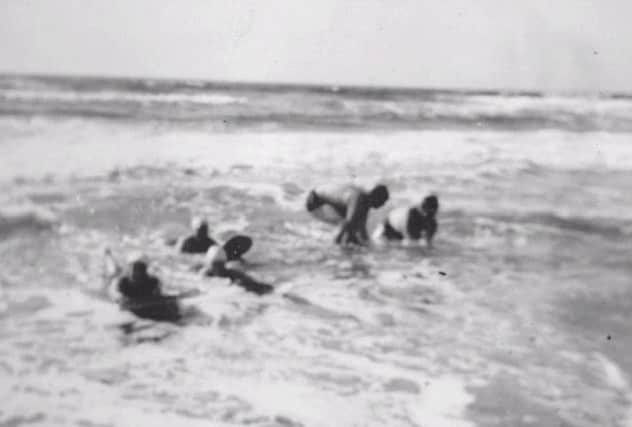Roger Cox: Search for Scotland’s first surfer


It all started in 2006, when the British Surfing Museum held an exhibition at Aberdeen Maritime Museum. The display was mostly dedicated to the history of the sport in England, but there was a section on Scotland too, and an information board claimed that the first person ever to surf here was an Englishman by the name of Tris Cokes, who visited in 1968. While leafing through the visitors’ book at the museum, however, I spied a note that read: “Brings back memories. Surfed pre-68 in Aberdeen.” It was signed “Sandy Mathers” so I called every Alexander Mathers in the Aberdeen area until I found the man I was looking for. Turned out Mathers and his friends had indeed surfed in Aberdeen before Cokes, but it later emerged that Aberdeen surfer George Law had surfed there even earlier, in the summer of 1967.
Up until about last Thursday, then, I was pretty certain that Law, who died earlier this year, was the original Scottish surfer. Now, though, after speaking to one of the coffin-lid surfers of the Mull of Kintyre, I’m not so sure.
Advertisement
Hide AdAdvertisement
Hide AdNeva MacDonald-Haig (nee Gordon-Dean) of Drumnadrochit will just have turned 91 by the time you read this, and it’s very possible that her older brother, Peter Gordon-Dean, was the first person ever to surf in Scottish waters.
MacDonald-Haig says that every summer from 1933 until about 1938, her parents Horace and Helen took her and her siblings Peter, Margaret and David on holiday to Westport, seven miles north of Machrihanish.
“There was this wonderful beach and never a soul on it except us,” she says. “There’s a picture of us all in our swimming clothes standing beside a sign that says ‘this beach is dangerous for bathers’ – but there was no talk about surfers.
“My father stood with us beside the sea one day and we were admiring and listening to the thunder of these great Atlantic rollers and he said to us ‘you know, there’s nothing between us and America.’
“We used to try and ride the waves with our bodies but he said ‘I think we should get help to ride these waves’ and he went to the local undertaker. Now, it makes a good story to say they were coffin lids that we rode on but it’s an exaggeration, they weren’t really. The undertaker made these boards for us. I don’t remember his name, I’m afraid, but we’ve got one or two pictures of us actually in the surf using these boards. The modern surfboards are all pointed aren’t they? But these surfboards were rounded. The photos aren’t very clear but you can see the shape. They were probably about five or six-feet long.”
The million dollar question for purists, of course, is: did anybody ever try to stand up on one of these undertaker-designed wave-riding vehicles? And did anybody succeed? Lying flat on a surfboard to ride a wave to the shore really counts as bodyboarding, and the hunt for Scotland’s first bodyboarder is perhaps a fixation for another time. MacDonald-Haig explains that she and her siblings mostly rode waves lying down, but there is one image in which her brother Peter certainly seems to be standing on his board, or at least trying to. It would certainly be possible to ride a wave standing up on a board that length, although probably not for very far. It’s hard to tell from the pictures, but the boards seem to have been little more than flat planks of wood, so they would probably have had to be moving quite fast before they were stable enough to stand on for any length of time.
Of course, it doesn’t really matter whether Scotland’s waves were first ridden by a stand-up surfer in the 1930s or the 1960s. The important thing is that we have plentiful waves on three coasts and have now figured out how to enjoy them, just as Neva MacDonald-Haig and her family did all those years ago.
Advertisement
Hide AdAdvertisement
Hide Ad“The same cottage we stayed at every year is still there,” she says, “and it’s now occupied by a surf instructor. We went to his house and he was very interested to hear this story.
“It’s strange there now, with Westport car park and all the notices about surfing up. When we were there there was just... nothing. But to us it was heaven.”